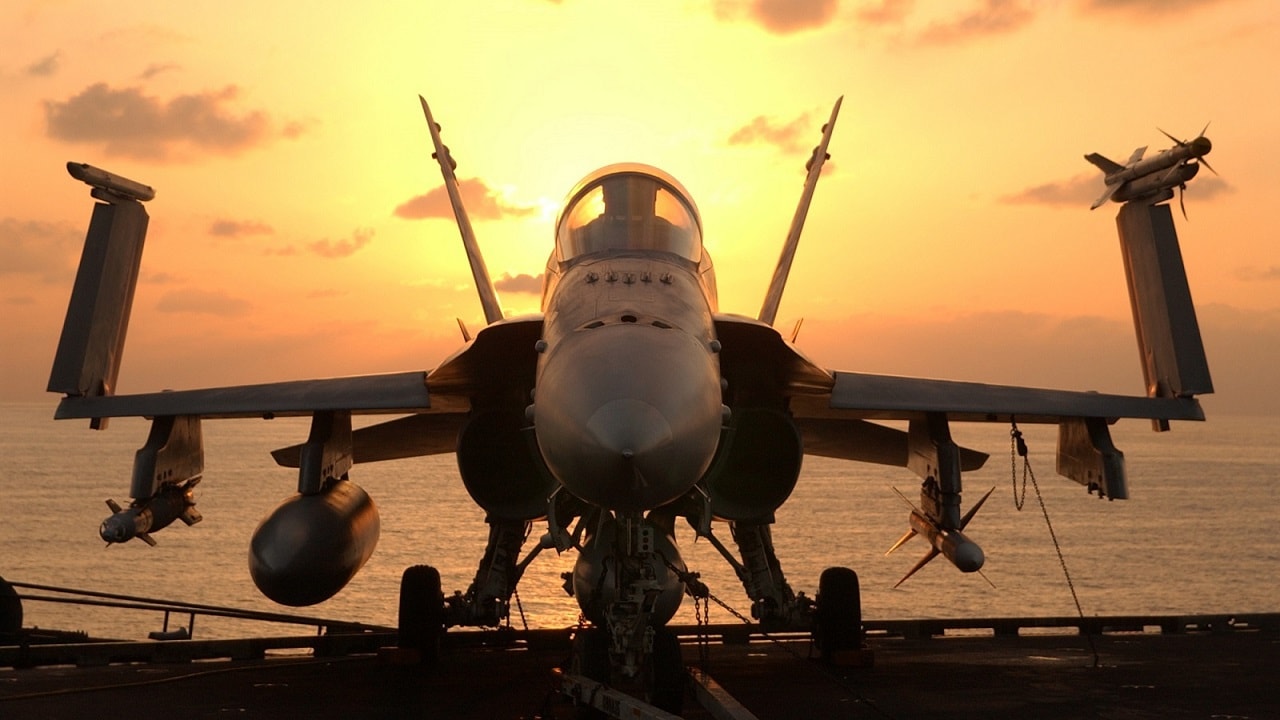Officials at Marine Corps Air Station Miramar confirmed that an F/A-18 Hornet crashed late Thursday evening, but as of Friday morning, with the plot losing their life.
Local news reported that the incident occurred just before midnight and that the jet went down in a remote area of the base – about 14 miles north of downtown San Diego.
“We are aware of an accident involving an F/A-18 Hornet in the vicinity of MCAS Miramar at 11:54 P.M. PST,” the base said in a statement. “This aircraft is not part of 3rd Marine Aircraft Wing but was operating out of MCAS Miramar.”
The statement from the base added, “The crash site is on government property east of the air station and there are no indications of damage to property on the ground. Search and rescue actions are ongoing.”
Past F/A-18 Hornet Crashes
This is just the most recent crash involving an F/A-18 Hornet and the second to occur near San Diego – and it followed another F/A-18 at Zaragoza Air Base in Spain in May. In that incident, the pilot ejected at a low altitude and was hospitalized.
It was on December 8, 2008, that a United States Marine Corps F/A-18 hornet crashed into the University City residential area of San Diego, destroying two houses and damaging a third. The pilot – the only crew member onboard the two-seat aircraft—safely ejected, however, a total of four residents in one house, two adults and two children, were killed. A USMC investigation concluded that poor maintenance had caused the engine malfunction while errors by the aviator and USMC personnel on the ground led to the Hornet crashing into the residential neighborhood.
In June 2016, United States Marine Corps Captain Jeff Kuss of the famed “Blue Angels” piloting a F/A-18C Hornet fatally crashed due to weather and fatigue at Marine Corps Air Station Miramar while preparing for the Great Tennessee Air Show. The Hornet crashed about two miles from the runway after an attempted “Split S” maneuver.
In April of 2012, a United States Navy F/A-18D also crashed into apartment buildings in Virginia Beach, Virginia. Both crew members were able to eject, but seven people were injured – including the two pilots, who were taken to the hospital. Fortunately, all survived. The crew also performed a last-second fuel dump and thus may have prevented a large explosion and fire after the crash.
The McDonnell Douglas F/A-18 Hornet is an all-weather supersonic, twin-engine, carrier-capable, multirole combat aircraft, designed as both a fighter and attack aircraft that was developed to replace the Douglas A-4 Skyhawk, the A-7 Corsair II, and the remaining McDonnell Douglas F-4 Phantom IIs, and to complement the F-14 Tomcat.
The aircraft first saw action during the 1986 United States bombing of Libya and subsequently participated in the 1991 Gulf War and 2003 Iraq War. It served as the baseline for the Boeing F/A-18E/F Super Hornet.
Author Experience and Expertise
A Senior Editor for 19FortyFive, Peter Suciu is a Michigan-based writer. He has contributed to more than four dozen magazines, newspapers, and websites with over 3,200 published pieces over a twenty-year career in journalism. He regularly writes about military hardware, firearms history, cybersecurity, politics, and international affairs. Peter is also a Contributing Writer for Forbes and Clearance Jobs. You can follow him on Twitter: @PeterSuciu.
From the Vault
The Navy Sent 4 Battleships To Attack North Korea
‘Sir, We Hit a Russian Submarine’: A U.S. Navy Sub Collided with a Nuclear Attack Sub

